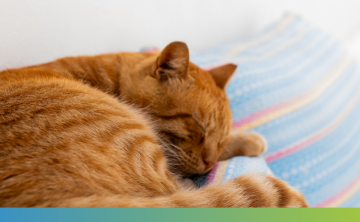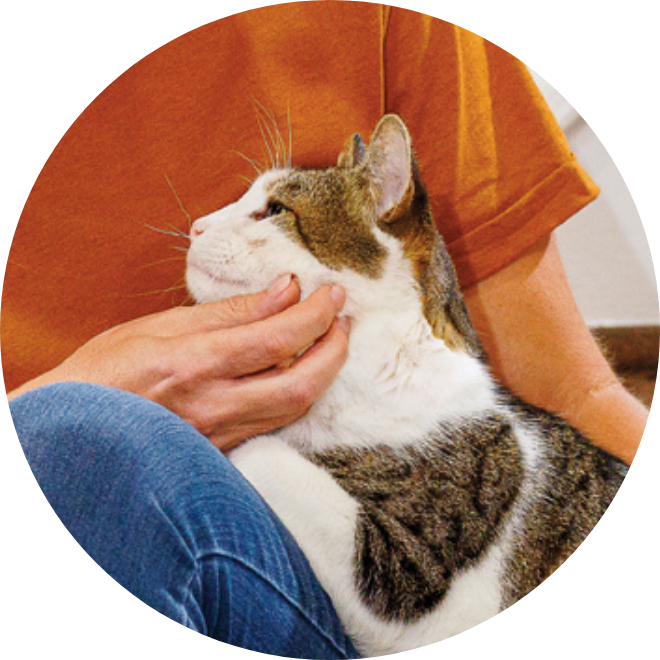

What is Senvelgo® and what is it licensed for?
Senvelgo® is a once-daily, flavoured oral solution containing the active ingredient velagliflozin for the treatment of diabetes mellitus in cats. Velagliflozin is a sodium-glucose co-transporter 2 (SGLT-2) inhibitor. It reduces blood glucose by preventing the reabsorption of glucose via the SGLT-2 transporter in the proximal tubule of the kidney. This causes urinary excretion of excess glucose and reduces hyperglycaemia which relieves glucose toxicity and peripheral insulin resistance to control diabetes.
Can I switch a cat from insulin to Senvelgo®?
Yes, cats can be transitioned from insulin to Senvelgo®, however we don’t recommend switching stable diabetic cats unless there are clinical or compliance reasons. For cats previously treated with insulin/another anti-diabetic medicinal product the dosing regime is the same as for newly diagnosed cats. When transitioning from insulin, omit the insulin evening dose from the day before starting Senvelgo®. Cats that are transitioned from insulin to Senvelgo® are at increased risk of developing diabetic ketoacidosis (DKA) and euglycaemic diabetic ketoacidosis (eDKA) and must be closely monitored in the post-transition period for the presence of ketones.
Is Senvelgo® easy to give to cats?
Senvelgo® is an oral solution which is administered via a reusable dosing syringe with 0.5 kg bodyweight markings either directly into the cat’s mouth or onto a small amount of food so that the cat eats it all at once. In addition, Senvelgo® has achieved the ISFM Easy to Give accreditation.
How do I store Senvelgo®?
Senvelgo® does not require any special storage conditions. The shelf-life after opening the bottle is 6 months.
What is the onset and duration of action of Senvelgo®?
Senvelgo® is rapidly absorbed with maximum plasma concentrations reached in under 3.7 hours in fed cats. Thus, Senvelgo® increases glucosuria from the first dose onwards. This leads to glycaemic control with a sustained decrease in blood glucose throughout the day, usually within one week.1,2
What are the side-effects of Senvelgo®?
The most common adverse event is diarrhoea or loose stool caused by minor inhibitory action of Senvelgo® on SGLT-1 in the small intestine. The majority of incidences of loose stool or diarrhoea last 7 days or less and usually resolve without specific therapy. The most serious potential adverse event is the development of euglycaemic diabetic ketoacidosis in cats which do not have sufficient endogenous insulin production.
Are cats treated with Senvelgo® at higher risk of urinary tract infections (UTIs)?
Urinary tract infection, including cystitis caused by infection, may occur as part of the underlying disease, although the glucosuric effect of velagliflozin may also contribute to UTIs. Urinary tract infections are common in feline diabetic patients, but the frequency of UTIs in cats treated with Senvelgo® is similar to that in cats treated with insulin.11 Standard cystitis / UTI therapy should be initiated if there are clinical signs of cystitis.
Is Senvelgo® as effective as insulin?
Yes. In a European clinical field trial, the safety and efficacy of Senvelgo® was evaluated and compared to insulin. The study confirmed that once daily Senvelgo® is non-inferior to (at least as good as) twice daily insulin injections.11,12
How do I identify and manage cats that might be going into remission?
Remission of diabetes mellitus in cats is a complex phenomenon, which can be influenced by multiple factors in individual patients, such as glycaemic control, diet, age, weight and/or genetics. Cats that enter remission while treated with exogenous insulin are often identified following a hypoglycaemic episode (usually due to continued administration of exogenous insulin once endogenous insulin production has increased). Due to Senvelgo®’s mode of action, it may be difficult to identify cats that are in remission, since these cats would not be expected to have clinical hypoglycaemic events. Consideration could be given to continuing treatment indefinitely or discontinuing and closely monitoring glycaemic control and for return of clinical signs. If the patient relapses, Senvelgo® can be restarted when appropriate. However, cats who relapse will have experienced further episodes of hyperglycaemia (and therefore glucose toxicity), which may affect remaining beta cell function and mean these cats may not respond as well to Senvelgo® in the future.
Can I feed a restricted carbohydrate diet to cats receiving Senvelgo®?
Whilst feeding a restricted carbohydrate diet improves glycaemic control in diabetic cats, the effect of feeding these diets to cats receiving Senvelgo® has not been specifically investigated. Feeding such a diet was not, however, an exclusion criteria in clinical trials, and there were no specific concerns identified in these cats throughout the trial period. The decision whether or not to feed a restricted carbohydrate diet should therefore follow a benefit-risk assessment on a case-by-case basis.
-
1. Niessen, S. J. M. et al. (2022) Once daily oral therapy for feline diabetes mellitus: evaluation of SGLT-2 inhibitor velagliflozin as stand-alone therapy compared to insulin injection therapy in diabetic cats. Journal of Veterinary Internal Medicine 36, 2512–2513.
-
2. Sparkes, A. H. et al. (2015) ISFM Consensus Guidelines on the Practical Management of Diabetes Mellitus in Cats. J Feline Med Surg 17, 235–50.
-
3. McCann, T., et al. (2007) Feline diabetes mellitus in the UK: the prevalence within an insured cat population and a questionnaire-based putative risk factor analysis. J Feline Med Surg 9, 289–9.
-
4. O’Neill, D., et al. (2016) Epidemiology of Diabetes Mellitus among 193,435 Cats Attending Primary-Care Veterinary Practices in England. J Vet Intern Med 30, 964–72.
-
5. Rand J, Gottlieb, SA. Feline diabetes mellitus. Textbook of Veterinary Internal Medicine, 8th edition. Ettinger SJ, Feldman EC and Cote E, eds. Elsevier, Missouri. 2017;1781-1795.
-
6. 2018 Summary of the Veterinary Clinic: Pet Obesity Prevalence Survey & Pet Owner: Weight Management, Nutrition, and Pet Food Survey. Available at:
https://petobesityprevention.org/2018. -
7. Niessen, S. J. M. et al. (2017) The Big Pet Diabetes Survey: Perceived Frequency and Triggers for Euthanasia. Vet Sci 4, 27.
-
8. Diabetes in Cats: Quantitative market research study. Proprietary presentation, July 19, 2021. Kynetec; St. Louis, MO, on behalf of Boehringer Ingelheim.
-
9. Niessen, S. J. M. et al. (2010) Evaluation of a quaility-of-life tool for cats with diabetes mellitus. J Vet Intern Med 24, 1098-105.
-
10. Behrend, E. N. et al. (2023) Velagliflozin, an SGLT2 Inhibitor, as a once-daily, oral solution, stand-alone therapy for feline diabetes mellitus. Oral abstract presentation, 2023 ACVIM Forum, Pennsylvania, Jun 15-17.
-
11. Niessen, S. J. M. et al. (2023) Efficacy and safety of once daily oral sodium-glucose co-transporter-2-inhibitor velagliflozin compared to twice daily insulin injection therapy in diabetic cats. Oral abstract presentation, 2023 ECVIM-CA Forum, Barcelona, Sept 21-23.
-
12. VMD. Summary of Product Characteristics (SPC): Senvelgo® 15mg/ml oral solution for cats (velagliflozin). Veterinary Medicines Directorate, UK.
-
13. CM Research (2022) Small animal vets UK April 2022. Syndicated Sales Rep Survey.


